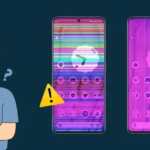How to Resolve Unfortunately App Has Stopped on Android 2024
Description
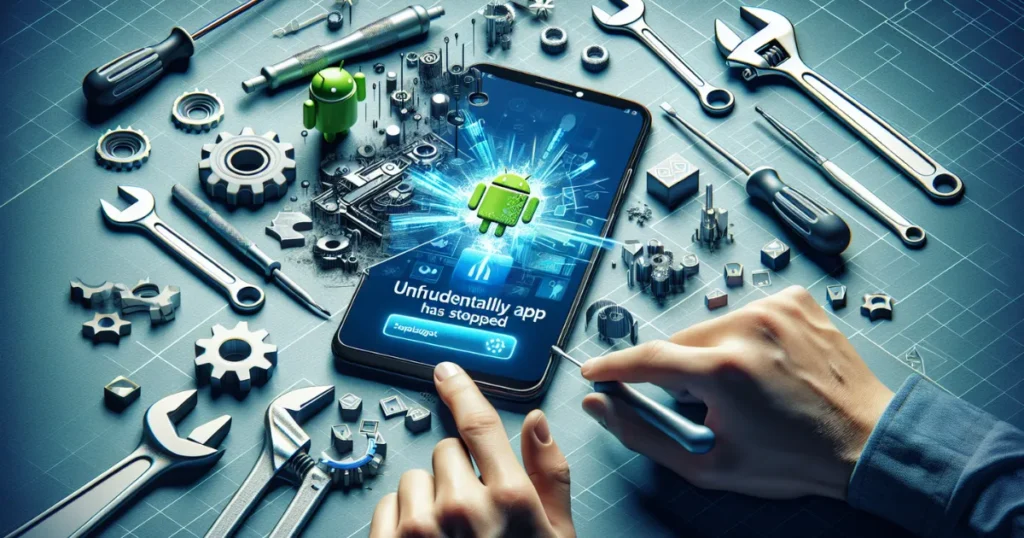
Have you ever encountered the frustrating Unfortunately the app has stopped error on your Android device?
This common issue, known as the ‘app stopped unexpectedly android’ error, can occur across various apps, such as Android System Webview, Snapchat, and Google Photos, often after an OS update to Android 6.0 Marshmallow.
But why does this happen, and what can be done to resolve it? Our guide aims to address these questions by exploring the root causes, from unstable internet connections to corrupted cache files, and offering targeted solutions to get your apps back up and running smoothly.
We’ll delve into both basic troubleshooting steps and advanced solutions, such as clearing cache, uninstalling and reinstalling problematic apps, and even using software like Dr.Fone – System Repair for data-related errors.
Whether the error, ‘Unfortunately, the app stopped unexpectedly android’, appears in essential apps like Google Play Music or during development in Android Studio, our tips will help you find a resolution. Stay tuned for a comprehensive discussion on preventing these errors, ensuring a smoother Android experience.
Table of Contents
Understanding Why Apps Stop Unexpectedly
Key Factors Leading to App Crashes
- Outdated or Incompatible Apps: Apps that haven’t been updated to align with the latest Android operating system may exhibit stability issues, leading to crashes, often accompanied by the ‘Unfortunately, app bugs’ message.
- Corrupted App Data: Accumulation of corrupted data within the app can hinder its performance, causing it to stop unexpectedly, a scenario often described as ‘Unfortunately, corrupted operating system’.
- Insufficient RAM and Storage: Limited RAM and storage space can prevent apps from running smoothly. This is particularly common in devices with lower specifications or those cluttered with many apps, leading to the ‘Unfortunately, device issues’ error.
- Device and System Issues: Problems with the Android device itself, such as firmware bugs or hardware malfunctions, can lead to app failures, aptly summed up as ‘Unfortunately, device issues’.
- Network Connectivity Issues: A weak or unstable internet connection can disrupt app functionality, especially for apps that rely heavily on cloud services.
- App Conflicts: Sometimes, one app can interfere with the operation of another, particularly if they use shared resources.
- Poor Code Quality: Apps that are poorly coded or have unresolved bugs can crash or freeze, regardless of the device’s condition, often resulting in the ‘Unfortunately, app bugs’ error.
- Environmental Factors: External factors like overheating of the device or running multiple applications simultaneously can also cause apps to stop, a situation that falls under ‘Unfortunately, device issues’.
By understanding these common triggers, users can better diagnose issues and apply appropriate solutions to prevent frequent app crashes. Unfortunately, these issues are more common than one might think.
What causes Unfortunately app has stopped
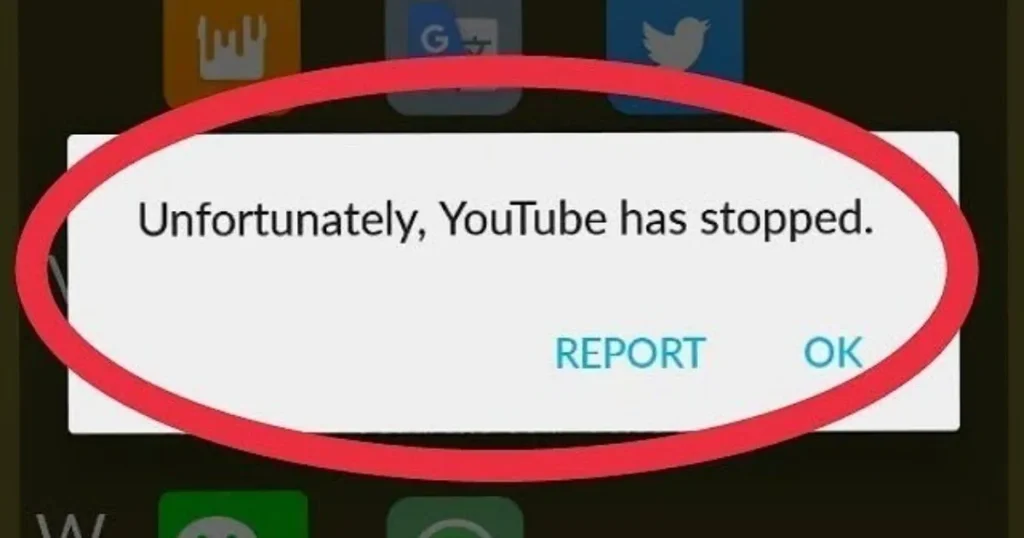
Possible Reasons for “Unfortunately App Has Stopped”
When we encounter the ‘unfortunately app has stopped’ message, it can be due to several factors impacting the app’s ability to function smoothly. Understanding these reasons can help us troubleshoot and fix the issue more effectively. Here are some common causes:
- Outdated Apps: Unfortunately, apps not updated to the latest version may not be compatible with your device’s current operating system, leading to crashes.
- Corrupted App Data: Over time, app data can become corrupted, which disrupts app performance and causes it to close unexpectedly. Unfortunately, this is a sign of a corrupted operating system.
- Software IssuesUnfortunately, bugs within the app or the operating system can also lead to this error.
- No Storage Space: Unfortunately, if your device runs out of storage, apps might not have enough space to execute tasks, causing them to stop abruptly. This is one of the common device issues.
- Not Enough Memory (RAM): Unfortunately, insufficient RAM can prevent apps from running properly, especially if multiple apps are open simultaneously. This is another example of device issues.
- App Permissions: Sometimes, apps require certain permissions to function correctly. If these aren’t granted, it might cause the app to stop.
By addressing these issues, you can reduce the frequency of this frustrating error and improve your overall user experience with Android devices. Unfortunately, it’s a common problem that many users face.
Unfortunately App Has Stopped on Android (Basic Troubleshooting Steps)
Restart Your Device
- Simple Restart: Often, a simple hardware reset can clear temporary glitches. Hold the power button, select ‘Restart’, and wait for the device to reboot.
Update Your Device and Apps
- Check for Android Updates: Navigate to Settings > System > System Update. Install any available updates to enhance app compatibility.
- Update Apps: Open Google Play Store, tap on your profile icon, go to ‘Manage apps & devices’, and update any apps that aren’t up to date.
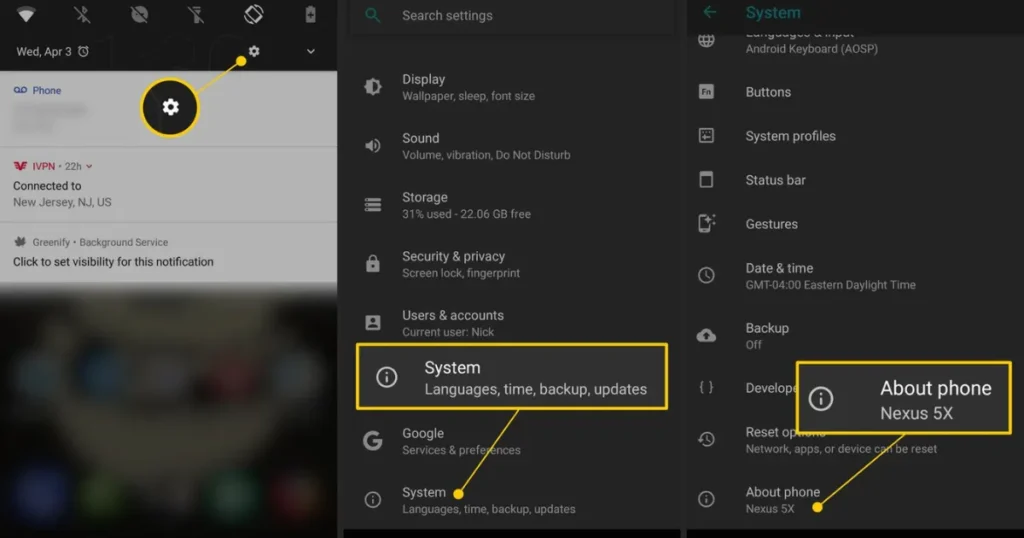
Clear Cache and Data
- Clear App Cache: Go to Settings > Apps > [Select App] > Storage > Clear Cache. This can resolve performance issues.
- Clear App Data: Follow the same steps but select ‘Clear Storage’ or ‘Clear Data’ to reset the app to its original state.
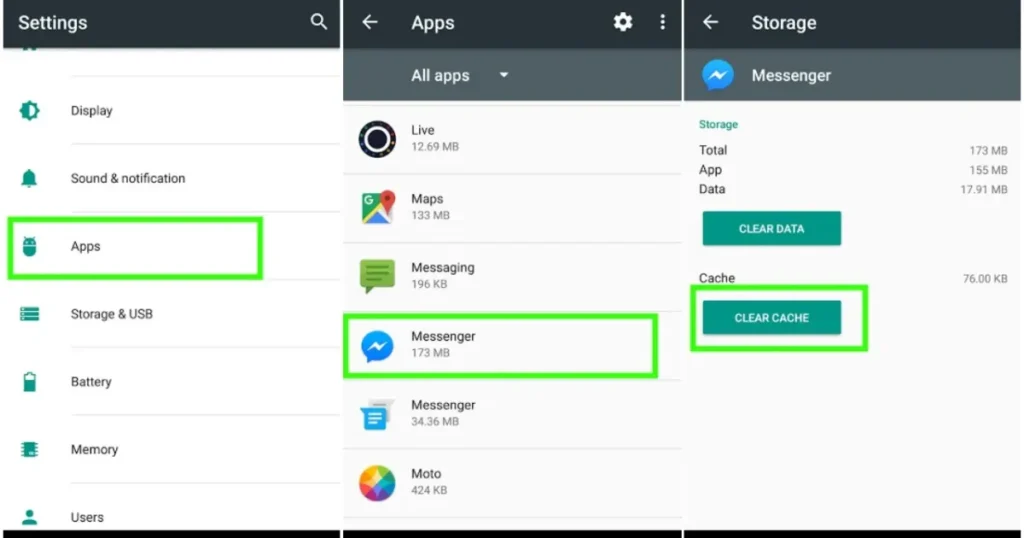
Force Stop and Restart the App
- Force Stop: Navigate to Settings > Apps > [Select App] > Force Stop. This can help if the app is unresponsive.
Reinstall the App
- Uninstall and Reinstall: If problems persist, uninstall the app from Settings > Apps > [Select App] > Uninstall, then reinstall it from the Google Play Store.
Use Safe Mode
- Restart in Safe Mode: This disables third-party apps. Hold the power button, tap and hold the ‘Power Off’ option, and select ‘Safe Mode’. Check if the issue persists without third-party apps.
Network Settings Adjustment
- Toggle Mobile Data: Sometimes, turning off mobile data for a few seconds and then turning it back on can resolve network-related issues.
Reset All Settings
- Reset Settings: If all else fails, go to Settings > System > Reset Options > Reset App Preferences or Reset All Settings. This won’t delete data but resets system settings to default, effectively acting as a hardware reset.
By systematically applying these steps, most common issues causing the ‘unfortunately app has stopped’ error can be effectively addressed.
Unfortunately App Has Stopped (Advanced Solutions)
Use Android Repair Tools
- Android Repair Tool: This specialized software is designed to address a variety of app-related errors on Android devices, including the ‘unfortunately app has stopped’ error. It provides a comprehensive solution by tackling system issues that might not be resolved through basic troubleshooting, effectively dealing with the ‘Unfortunately’ error.
Utilize ADB for Cache Clearance
- Clear Cache with ADB: Advanced users can utilize Android Debug Bridge (ADB) commands to clear an app’s cache. This method is particularly useful if the app is not responding to standard cache clearing methods through the device settings, offering a deeper level of troubleshooting with adb logcat.
Safe Mode Diagnosis
- Boot into Safe Mode: Restarting your device in Safe Mode can help determine if third-party apps are causing your app to stop. In Safe Mode, all third-party apps are disabled, allowing you to assess if the issue persists with the core system apps.
Reset App Preferences
- Reset App Preferences: This action resets all preferences for Disabled apps, Disabled app notifications, Default applications for actions, Background data restrictions for apps, and Permission restrictions but does not delete any app data. This is a reversible process that often resolves conflicting issues without data loss.
Storage Management
- Move Apps to Internal Storage: If your apps are stored on an SD card, moving them to the internal storage can resolve performance issues. This is because internal storage is typically faster than external storage media.
Factory Reset
- Perform a Factory Reset: As a last resort, a hardware reset can resolve persistent issues by returning the phone to its original system state. Remember, this step should only be taken after all important data has been backed up, as it will erase all data from the device.
By implementing these advanced solutions, users can tackle more complex issues that are not resolved by basic troubleshooting steps, effectively addressing the ‘Unfortunately’ error.
Preventive Measures and Best Practices
Implement Feature Detection and Compatibility Checks
- Pre-Download Feature Detection:
- Utilize the
<uses-feature>Using theelement in the app manifest to detect hardware and software features before the app is downloaded ensures compatibility with the user’s device.
- Utilize the
- Runtime Feature Detection:
- Detect features at runtime and alert users if certain hardware or software is not supported, reducing the risk of crashes due to incompatible features. This approach helps in managing exception types effectively.
- Version Compatibility:
- Specify in the app manifest the supported Android versions to prevent installation on incompatible devices.
- Android Version Check at Runtime:
- Implement checks to identify the Android version at runtime and disable features that are not supported by older versions.
Use Libraries and Monitoring Tools
- Android Support Library:
- Incorporate the Android Support Library to enhance app compatibility across multiple Android versions and devices.
- Stability Monitoring:
- Employ tools like Bugsnag to monitor app stability and prioritize bug fixes based on their impact, enhancing overall app performance. This approach is crucial for deployment automation and addressing app bugs efficiently.
Exception Handling and Data Management
- Background Thread Exception Handling:
- Use
Thread.setDefaultUncaughtExceptionHandlerto manage exceptions in background threads, preventing crashes from unhandled exceptions.
- Use
- Custom BaseActivity for Exception Handling:
- Develop a custom BaseActivity that implements a global uncaught exception handler to log errors and maintain stability, specifically focusing on the exception type to ensure a smoother user experience.
- Manage App Updates and Storage:
- Regularly update apps and clear cached data to minimize storage issues and ensure the latest features and bug fixes are in place.
Permissions and User Data
- App Permissions Review:
- Regularly check and manage app permissions to ensure they are correctly set, avoiding crashes due to permission errors.
- Data and Cache Management:
- Clear app data and cache regularly to free up space and maintain app performance.
Best Practices for Maintenance
- Regular Device Reboots:
- Encourage users to reboot their devices regularly to clear system caches and refresh the operating system, reducing the likelihood of app crashes.
- Professional App Management:
- Recommend the use of professional app management tools like Avast Cleanup to optimize app performance and prevent potential issues before they arise.
By adhering to these preventive measures and best practices, developers and users can significantly reduce the frequency of the ‘unfortunately app has stopped’ error, leading to a smoother and more reliable Android experience.
How do I fix unfortunately Google has stopped?
Reboot and Check Connections
- Reboot Your Device: Sometimes, simply restarting your Android device can fix the ‘unfortunately Google has stopped’ error. Hold down the power button, select ‘Restart’, and allow the device to reboot. This simple action can be effective after a google settings app update or if you encounter the ‘unfortunately google app has stopped lollipop’ issue.
- Check Internet Connection: Ensure your device is connected to a stable internet connection. A poor connection can sometimes cause the app to stop unexpectedly.
Update and Manage Apps
- Update Google App: Navigate to Google Play Store, search for the Google app, and tap ‘Update’ if available. Keeping the app updated through Google settings app update is crucial for smooth operation.
- Force Stop and Restart Google App: Go to Settings > Apps > Google App > Force Stop. Then, reopen the app to see if the issue persists.
- Clear Cache and Data: Go to Settings > Apps > Google App > Storage > Clear Cache and then Clear Data. This step often resolves issues by removing old data that may cause the app to crash.
Advanced App Management
- Reinstall the Google App: Uninstall the app by going to Settings > Apps > Google App > Uninstall. Reinstall it from the Google Play Store to ensure you have the latest version.
- Update Google Play Services: Sometimes, updating Google Play Services through the Google Play Services settings can resolve the app’s issues. Find Google Play Services in the Google Play Store and update it.
- Check App Permissions: Ensure that all necessary permissions are granted to the Google app. Go to Settings > Apps > Google App > Permissions and enable any permission that has been disabled.
Storage and Factory Reset
- Free Up Storage Space: Lack of storage space can lead to app crashes. Delete unnecessary files or apps to free up space on your device.
- Factory Reset: As a last resort, you can perform a hardware reset. Back up all important data first, then go to Settings > System > Reset Options > Erase all data (factory reset).
Seeking Further Assistance
- Contact Google Support: If the problem persists after trying all the above steps, it may be necessary to contact Google Support for further assistance. They can provide more specific solutions based on the details of your device and the issue.
By following these steps, most issues related to the ‘unfortunately Google has stopped’ error can be resolved effectively, restoring functionality to your device and ensuring a smoother user experience.
What to do if an app isn’t responding?
When an app isn’t responding on your Android device, it can be both frustrating and disruptive. Here are practical steps to diagnose and fix the issue effectively:
- Retrieve and Analyze the Stack Trace:
- Open Android Studio and access the stack trace by clicking on the ‘Logcat’ button or pressing ‘alt+6’. This will provide detailed information about what went wrong, utilizing ‘adb logcat’ for a deeper analysis.
- Understanding the Stack Trace:
- Analyze the stack trace to pinpoint the cause of the non-response, focusing on the ‘exception type’. The highest-voted answer on Stack Overflow offers a detailed guide on how to do this effectively.
- Force Stop the App:
- Navigate to Settings > Apps > [Select App] > Force Stop. This can help reset the app’s state and potentially resolve the issue.
- Clear App Data and Cache:
- Go to Settings > Apps > [Select App] > Storage > Clear Cache and then Clear Data. This removes temporary files and data that may be causing the problem.
- Reinstall the App:
- Uninstall the app by going to Settings > Apps > [Select App] > Uninstall. Reinstall it from the Google Play Store to ensure you have the most current version.
- Contact the App Developer:
- If the problem persists, reaching out to the app’s developer might be necessary. They can provide specific solutions or acknowledge ongoing issues with the app, making it crucial to contact the app developer for further assistance.
- Log into Your Reddit Account:
- If the app issue is related to accessing content on platforms like Reddit, try logging into your account again as this might resolve some permission or data-specific issues.
- File a Ticket:
- In cases where you suspect an error or blockage not due to your actions, filing a ticket for a detailed investigation might help resolve the issue.
By following these steps, you can address most scenarios where, unfortunately, an app may stop responding, ensuring minimal disruption to your device usage.
FAQs
1. What steps can I take to fix an app that has stopped working on my Android device?
To address the issue of an app stopping unexpectedly on Android, you can try the following steps: Unfortunately, this is a common issue, but with the right approach, it can be resolved.
Force close and restart the app: This can resolve minor glitches or temporary problems.
Clear app cache and data: This helps eliminate issues that arise from corrupted or outdated data within the app.
2. How can I prevent my Android apps from constantly stopping?
To prevent apps from frequently crashing on your Android device, consider these solutions:
Restart your device: This can fix many basic issues.
Check your internet connection: Ensure it’s stable and active.
Update the problematic app: Keeping apps up-to-date can resolve compatibility issues.
Update Google Play Services: This is crucial for the proper functioning of apps.
Force stop the app: This can stop ongoing issues within the app.
Clear app data: Similar to clearing cache, but more thorough.
Check app permissions: Make sure the app has all the permissions it needs to function correctly.
Reinstall the app: Sometimes, a fresh install is necessary to clear up any lingering issues.
3. What should I do if I encounter an app error on my Android phone?
If you face an app error on Android, follow these steps:
Clear the app’s cache: Go to Settings > Apps > [App Name] > Storage and select ‘Clear Cache’.
Reboot your device: Often, this simple step can resolve many issues.
Update your Android OS: Ensure that your device’s operating system is up-to-date.
Reinstall the app: If problems persist, uninstalling and then reinstalling the app may help.
4. What are the common causes of Android apps not responding?
Apps on Android may stop responding for several reasons, including:
Insufficient storage space: Make sure your device has enough space to run apps smoothly.
Internet connectivity issues: A poor or interrupted connection can affect app performance.
Conclusion
Navigating the complexities of resolving the ‘unfortunately, the app has stopped’ error on Android devices showcases not only the breadth of potential issues but also illuminates the path towards effective solutions.
From understanding the root causes such as outdated apps and insufficient RAM, to implementing advanced solutions like Android repair tools and factory resets, users are equipped with the knowledge to enhance their device’s performance.
The guidance provided aims to ensure that the frustration of halted apps becomes a rare inconvenience, bolstering users’ confidence in managing their digital experiences.
Moreover, the article underscores the importance of preventative measures and best practices, from employing feature detection and compatibility checks to engaging with app management tools. These strategies are pivotal in curbing the occurrence of errors, thereby fostering a more seamless interaction with technology.
As we embrace these methods, we not only alleviate immediate issues but also contribute to a more robust and reliable Android ecosystem. Thus, armed with these insights, users can look forward to a more resilient and enjoyable digital journey.




